 Last additions Last additions |
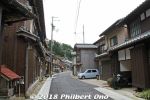
Coastal road in Ine.Nov 27, 2018
|
|

Nov 27, 2018
|
|
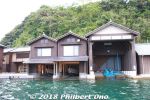
Nov 27, 2018
|
|
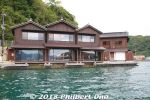
A few new buildings have also been built for tourists.Nov 27, 2018
|
|
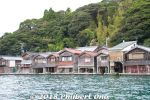
Nov 27, 2018
|
|
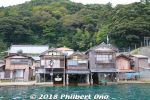
The 30-min. boat cruise gave us our fill of many photos of these funaya.Nov 27, 2018
|
|
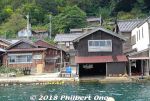
This boat house was used in Tora-san movie No. 29 with Ishida Ayumi and Atsumi Kiyoshi. Looks the same.Nov 27, 2018
|
|
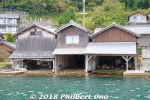
These funaya are the oldest in Ine, dating back to the Edo Period.Nov 27, 2018
|
|
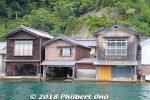
Nov 27, 2018
|
|
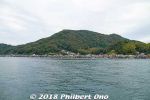
Ine from afar.Nov 27, 2018
|
|
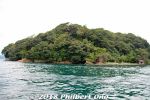
Aoshima is the small island at the Ine Bay's entrance acting as a breakwater. There's an Ebisu Shrine on the island. Only fishermen are allowed on the island. Nov 27, 2018
|
|
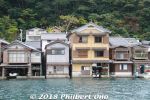
These boat houses are usually used as a second house for retired grandparents or for a young married couple who want some privacy (especially at night). Or it can be used as a workplace, a guesthouse, or paid lodging.Nov 27, 2018
|
|
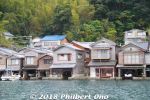
Nov 27, 2018
|
|

Nov 27, 2018
|
|
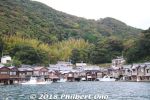
The Ine waterfront has looked like this since the 1930s when they reclaimed some of the coastline and fishermen rebuilt their homes right over the water.Nov 27, 2018
|
|
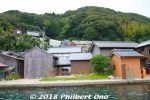
This used to be a cruise boat dock. Used in a Tora-san movie with Ishida Ayumi.Nov 27, 2018
|
|
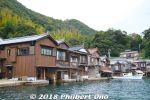
Nov 27, 2018
|
|
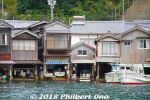
You may think these homes in Ine are sitting ducks for high waves, typhoons, high tides, etc. But they are in a sheltered bay facing south, away from the Sea of Japan. Mountains shield the bay on three sides and a small island (Aoshima) on the bay's entrance acts like a breakwater. Ine Bay is largely untouched by the rough seas of the Sea of Japan and the water is very calm. Also, the ocean tide varies by only 50 cm at most. See Ine's location here: https://goo.gl/maps/sXVERESwvMT2Nov 27, 2018
|
|
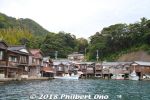
Some of the funaya offer lodging where you can stay above the boat garage. They get booked up quickly though. They let you go fishing by boat or from shore. Nov 27, 2018
|
|
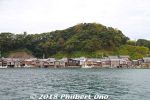
Ine in northern Kyoto Prefecture has 230 funaya boat houses on the waterfront stretching for about 5 km.Nov 27, 2018
|
|

Seagulls expect to be fed by boat tourists. We even got free bird food. But I feared the droppings on me or my cameras. Luckily I came out clean.Nov 27, 2018
|
|
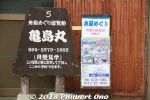
Phone No. for Mr. Yamada's Kameshima Maru boat cruises in Ine. This is at the boat dock.Map (Kameshima Maru boat dock): https://goo.gl/maps/9zmSW4Nun4P2Nov 27, 2018
|
|
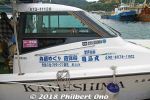
Phone No. for Mr. Yamada's Kameshima Maru boat cruises in Ine. Nov 27, 2018
|
|
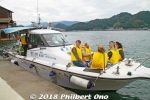
A great way to see Ine is by boat (called "sea taxi"). Small boats offer 30-min tours for only ¥1,000 per person. This boat was the "Kameshima Maru" (亀島丸) operated by Toshikazu Yamada. He pointed out the boat houses and locationThere's no cruise schedule so you can just call and set a time for a cruise. There must be at least two people for a cruise to depart. http://kameshimamaru.server-shared.com/index.htmlNov 27, 2018
|
|
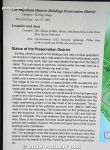
About Ine's Important Traditional Townscape Preservation District.Nov 27, 2018
|
|
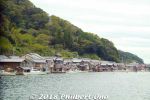
Ine has been used as a backdrop in Japanese movies (like Tora-san in movie No. 29 and Tsuribaka Nisshi in movie No. 5).Nov 27, 2018
|
|

Ine is kind of out of the way to visit, but well worth the trip.Nov 27, 2018
|
|
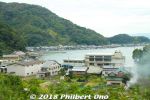
On the east coast of Tango Peninsula in northern Kyoto Prefecture is Ine, a picturesque fishing village right on the water's edge. Unique for the built-in funaya "boat garages" (舟屋) where waterfront homes keep a boat next to the water. This village is designated as a National Important Traditional Townscape Preservation District (重要伝統的建造物 群保存地区) and Japan's first fishing village to be so designated.("Funaya" means boat house.)
Nov 27, 2018
|
|
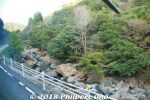
Roadside river near Oeyama Mountains.Nov 27, 2018
|
|
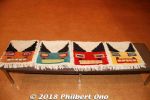
BenchNov 27, 2018
|
|
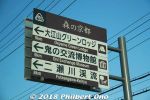
Road directions.Nov 27, 2018
|
|
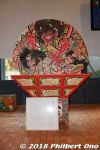
Neputa float from Hirosaki, Aomori Prefecture. From the Neputa Matsuri Festival held in Aug. The float has lights inside and it is lit up and pulled by people during the festival held in the evening.Nov 27, 2018
|
|
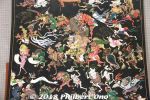
Nov 27, 2018
|
|

Nov 27, 2018
|
|
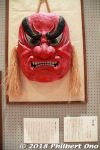
Nov 27, 2018
|
|

Otsu-e oni painting from Otsu, Shiga Prefecture. 大津絵Nov 27, 2018
|
|

Otsu-e oni painting from Otsu, Shiga Prefecture. 大津絵Japanese Oni Exchange Museum in Fukuchiyama, Kyoto Prefecture.Nov 27, 2018
|
|
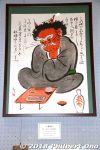
Otsu-e oni painting from Otsu, Shiga Prefecture. 大津絵Japanese Oni Exchange Museum in Fukuchiyama, Kyoto Prefecture.Nov 27, 2018
|
|
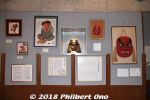
Nov 27, 2018
|
|
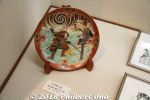
Nov 27, 2018
|
|
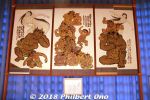
Nov 27, 2018
|
|
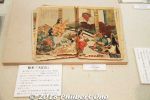
Oeyama oni legend.Nov 27, 2018
|
|
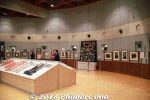
Large exhibition room displaying oni artworks.Nov 27, 2018
|
|
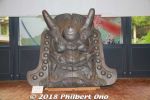
Giant oni-gawara roof ornament.Nov 27, 2018
|
|
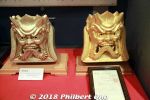
Nov 27, 2018
|
|
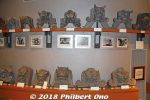
Kawara roof oni ornaments. Oni-gawara.Nov 27, 2018
|
|
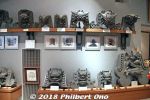
Kawara roof oni ornaments. Oni-gawara.Nov 27, 2018
|
|
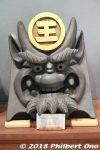
Kawara roof oni ornament. Oni-gawara.Nov 27, 2018
|
|
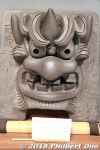
Kawara roof oni ornament. Oni-gawara.Nov 27, 2018
|
|
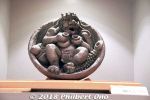
Nov 27, 2018
|
|
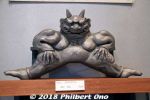
Kawara roof oni ornament.Japanese Oni Exchange Museum in Fukuchiyama, Kyoto Prefecture.Nov 27, 2018
|
|
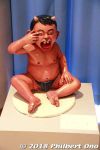
Child demon (バジ鬼) from Bali, Indonesia. Protects children from danger by warning them if they are in danger.Japanese Oni Exchange Museum in Fukuchiyama, Kyoto Prefecture.Nov 27, 2018
|
|
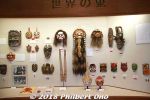
Oni even from overseas. Nov 27, 2018
|
|
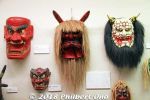
Nov 27, 2018
|
|
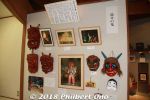
Setsubun oni.Nov 27, 2018
|
|
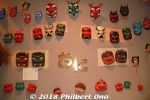
Nov 27, 2018
|
|
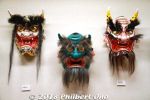
Nov 27, 2018
|
|
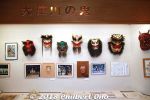
Oni masks based on Oeyama's three famous oni legends, especially "Shuten-doji" (酒呑童子).Nov 27, 2018
|
|
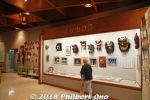
Nov 27, 2018
|
|
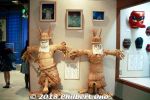
Nov 27, 2018
|
|
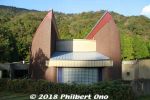
Japanese Oni Exchange Museum exhibits oni (demon, ogre) artwork and local oni legends of the Oeyama Mountains. Masks, statues, kawara roof tile ornaments, and paintings of oni from all over Japan and some from overseas. All donated to the museum. The museum is at the foot of the Oeyama Mountains (大江山). The Oeyama mountains are known for famous oni legends. That's why this museum was built here.Nov 27, 2018
|
|
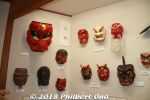
Tengu goblin masks.Nov 27, 2018
|
|
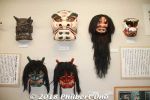
"Oni" has no real equivalent word in English. It's usually a fearsome or hellish figure with negative connotations. It always has horns on the head, but it's not really a devil. Oni are generally perceived to be mean, cruel, evil, or bad luck. So if someone calls you an "oni," it means you're mean, cruel, or always angry. But there may be protective and benevolent ones as well.Nov 27, 2018
|
|
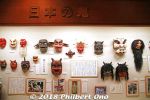
These are oni masks from all over Japan. Very impressive collection of everything oni.Nov 27, 2018
|
|
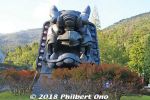
Right outside the oni museum is the world's largest oni-gawara oni roof ornament, 5 meters high, weighing 10 tons. Named "Oeyama Heisei no Dai-Oni." (大江山平成の大鬼).Japanese Oni Exchange Museum in Fukuchiyama, Kyoto Prefecture.Nov 27, 2018
|
|
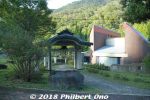
The town wanted to promote itself as an oni town, so it opened the Japanese Oni Exchange Museum in 1993 on the former site of a copper mine at the foot of Oeyama Mountains.Nov 27, 2018
|
|
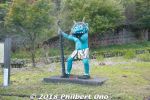
Fukuchiyama also has the Oeyama Mountains, a long mountain range from the neck of the Tango Peninsula to Fukuchiyama. Oeyama is famous for oni (demon, ogre) legends. Near the foot of Oeyama in Fukuchiyama, you may see oni statues like this one.Nov 27, 2018
|
|
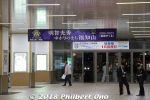
Fukuchiyama is really crazy about its connection with Akechi Mitsuhide. Here's a banner inside Fukuchiyama Station saying "The Town of Akechi Mitsuhide."In 2020, the year-long NHK TV Taiga Drama (「麒麟がくる」) will be about Mitsuhide.Nov 27, 2018
|
|
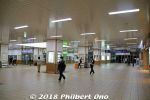
Inside JR Fukuchiyama Station.Nov 27, 2018
|
|
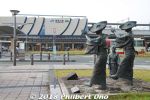
At JR Fukuchiyama Station is this statue of Dokkoise bon dancers dancing to the Fukuchiyama Ondo. This song originated with "Dokkoise!" (ドッコイセ) shouted when local workers had to move something heavy (like the stones for the stone walls) while they were building Fukuchiyama Castle in the 16th century on the order of Akechi Mitsuhide.Nov 27, 2018
|
|
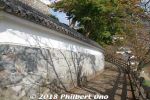
Nov 27, 2018
|
|
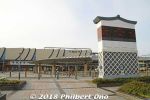
JR Fukuchiyama Station is the gateway to northern Kyoto Prefecture. It is a terminal station for Kyoto Tango Railway, the dominant train network in this area. From Fukuchiyama, you can get to Maizuru, Miyazu, Amanohashidate, and even Toyooka in Hyogo Prefecture. The JR San'in Line also stops at Fukuchiyama.Nov 27, 2018
|
|
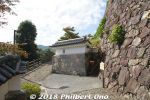
Nov 27, 2018
|
|
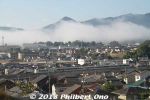
Nov 27, 2018
|
|
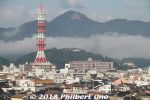
Nov 27, 2018
|
|
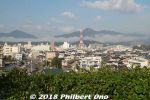
Nov 27, 2018
|
|
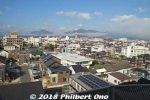
Views of the city from the Honmaru.Nov 27, 2018
|
|

About Fukuchiyama Castle's unconventional stones. (転用石)Nov 27, 2018
|
|
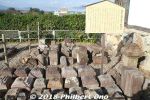
When the castle tower was being reconstructed, they found over 500 of these unconventional stones originally from gravestones, stone lanterns, and even Buddha stone statues. (転用石)Nov 27, 2018
|
|

About the Akaganemon Bansho guardhouse. 銅門脇番所Nov 27, 2018
|
|
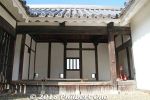
Akaganemon Bansho guardhouse. 銅門脇番所Nov 27, 2018
|
|
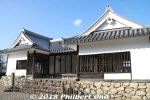
Akaganemon Bansho guardhouse was moved here from its original location. 銅門脇番所Nov 27, 2018
|
|
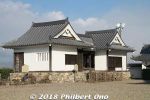
Next to the main castle tower is the Akaganemon Bansho guardhouse that was located next to the Akaganemon Gate east of the city hall. 銅門脇番所Nov 27, 2018
|
|
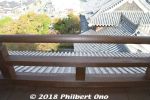
Nov 27, 2018
|
|
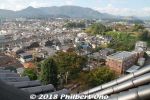
Nov 27, 2018
|
|
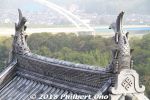
Shachi roof ornaments on the smaller castle tower.Nov 27, 2018
|
|
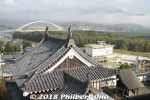
Nov 27, 2018
|
|
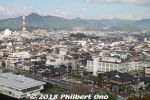
Views from Fukuchiyama Castle.Nov 27, 2018
|
|
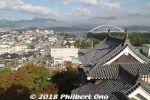
Nov 27, 2018
|
|
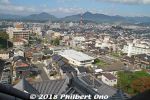
Top floor of the castle tower gives great views of the city. This is toward City Hall and Fukuchiyama Station.Nov 27, 2018
|
|
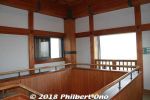
Top floor of the castle tower.Nov 27, 2018
|
|
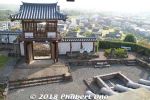
View of the front gate.Nov 27, 2018
|
|
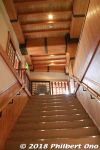
Inside the castle tower is a modern building housing a local history museum. Photography is not allowed inside the castle museum.Nov 27, 2018
|
|

About the Shachi roof ornament replica.Nov 27, 2018
|
|

Shachi roof ornament replica of the one on the castle roof.Nov 27, 2018
|
|
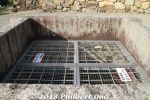
Deep well (50 meters) named Toyo-iwa-no-i. 豊磐の井Nov 27, 2018
|
|
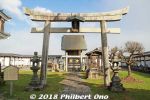
A Shinto shrine next to the castle.Nov 27, 2018
|
|
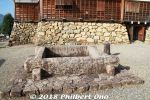
In front of the castle tower is this deep well named Toyo-iwa-no-i. 豊磐の井Nov 27, 2018
|
|
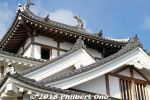
Nov 27, 2018
|
|

Front (entrance) view of Fukuchiyama Castle. Inside is a modern building housing a local history museum. Although Fukuchiyama Castle was occupied by a number of lords, it is most strongly associated with Akechi Mitsuhide who built it and occupied it for only three years before he was killed by Toyotomi Hideyoshi in 1582 for assassinating Oda Nobunaga. Fukuchiyama, Kyoto Prefecture.Nov 27, 2018
|
|
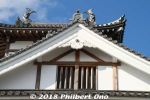
Nov 27, 2018
|
|
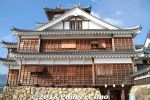
Nov 27, 2018
|
|
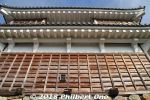
Nov 27, 2018
|
|
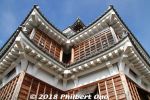
Nov 27, 2018
|
|
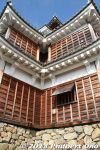
Nov 27, 2018
|
|
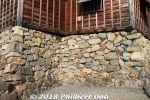
Nov 27, 2018
|
|

But these unconventional stones have been placed in prominent places so people can see them. So prevailing theory is, these stones (many are upside down) were to show that the castle lord and the local people were working together since only the local people could obtain these gravestones, etc. Gravestones and stone Buddhas also contain ancestral spirits so embedding them in the castle walls give more power to the castle. Nov 27, 2018
|
|
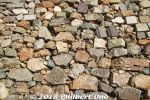
You might think that castle lord did not have enough money to procure enough stones for the walls. Or maybe he was in a real hurry to build the castle and used any stones he could find. In such cases, it would be embarrassing for the lord.Nov 27, 2018
|
|
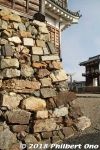
Fukuchiyama Castle is also noted for its stone walls using stones that were originally something else, like gravestones, stone lanterns, and even Buddha stone statues (転用石).Fukuchiyama, Kyoto Prefecture.Nov 27, 2018
|
|
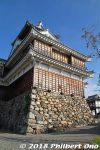
Nov 27, 2018
|
|
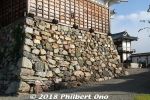
Nov 27, 2018
|
|
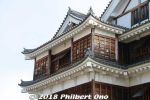
Nov 27, 2018
|
|
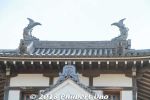
Roof ornamentsNov 27, 2018
|
|

About Fukuchiyama Castle.Nov 27, 2018
|
|
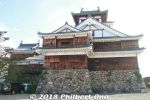
Rear view of Fukuchiyama Castle. Nov 27, 2018
|
|
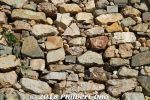
Nov 27, 2018
|
|
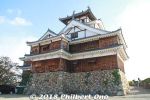
Rear view of Fukuchiyama Castle's main tenshu tower.Nov 27, 2018
|
|
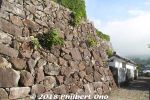
Stone wall of the main castle tower.Nov 27, 2018
|
|
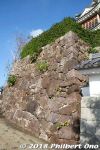
Nov 27, 2018
|
|
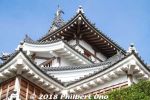
Nov 27, 2018
|
|
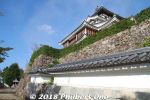
Walk up a little more.Nov 27, 2018
|
|
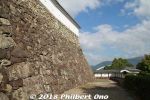
Nov 27, 2018
|
|
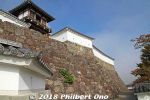
Impressive stone work.Nov 27, 2018
|
|
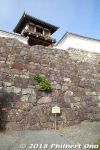
Nov 27, 2018
|
|
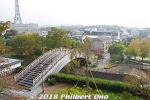
Nov 27, 2018
|
|
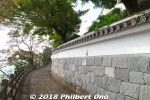
Nov 27, 2018
|
|
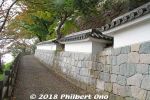
Walk uphill to the castle.Nov 27, 2018
|
|
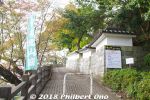
Walk uphill to the castle.Nov 27, 2018
|
|
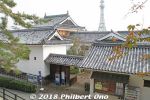
Sato Taisei Memorial MuseumNov 27, 2018
|
|
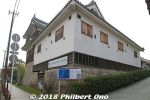
Turn right here. This is the Sato Taisei Memorial Museum, an art museum unrelated to the castle.Nov 27, 2018
|
|
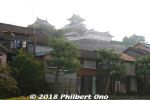
Nov 27, 2018
|
|
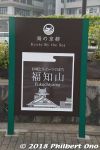
Kyoto by the Sea promoting Fukuchiyama Castle.Nov 27, 2018
|
|
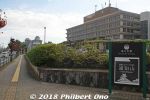
Near Fukuchiyama City Hall, Fukuchiyama Castle.Nov 27, 2018
|
|
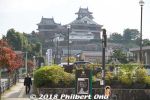
Fukuchiyama Castle's main tower was reconstructed in 1986 funded mostly by donations by the public and subsidies from the Japanese government. Hardly any local tax money from Fukuchiyama was used.Nov 27, 2018
|
|
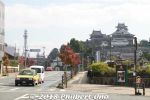
Near Fukuchiyama City Hall, Fukuchiyama Castle in plain sight from the street. Like most other castles, the original Fukuchiyama Castle was ordered to be dismantled in 1873 by the Meiji government.Nov 27, 2018
|
|
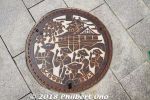
Fukuchiyama manhole has Fukuchiyama Castle and dokkise dancers. In northern Kyoto Prefecture.Nov 27, 2018
|
|
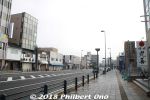
From Fukuchiyama Station, a straight road to Fukuchiyama Castle.Nov 27, 2018
|
|

Fukuchiyama Castle was mainly built by Akechi Mitsuhide in 1579 after he conquered this region for Oda Nobunaga.20-min. walk from JR Fukuchiyama Station. Open 9 am–5 pm, closed Tue. and Dec. 28th–31st, Jan. 4th–6th. Map: https://goo.gl/maps/8ZY7HHrDvoC2Nov 27, 2018
|
|
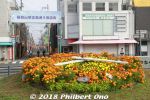
Flower Clock in front of Fukuchiyama Station.Nov 27, 2018
|
|
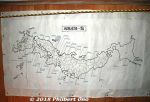
Places in Japan where washi is made.https://kurotaniwashi.kyoto
English: https://kurotaniwashi.kyoto/?page_id=450Nov 27, 2018
|
|
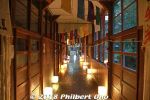
Nov 27, 2018
|
|
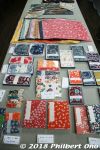
Nov 27, 2018
|
|
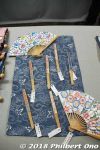
Nov 27, 2018
|
|
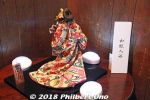
Nov 27, 2018
|
|
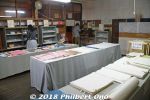
Gift shop.Nov 27, 2018
|
|
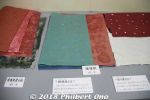
Nov 27, 2018
|
|
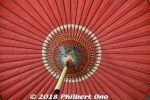
Kurotani washi can even be used for umbrellas.Nov 27, 2018
|
|
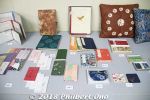
Kurotani washi has long fibers, making it very strong and durable. It has many uses such as umbrellas, shoji paper sliding doors, and packaging.Nov 27, 2018
|
|
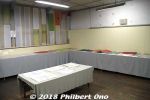
Second floor in former classrooms are exhibition rooms.Nov 27, 2018
|
|
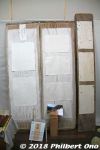
The washi shets are dried on wooden boards.Nov 27, 2018
|
|
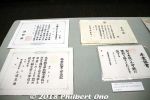
Local public schools have their kids make their diplomas with Kurotani washi.Nov 27, 2018
|
|

Kami-suki is what everyone can experience.Nov 27, 2018
|
|
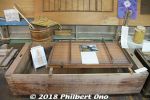
The vat and mold to make paper.Nov 27, 2018
|
|
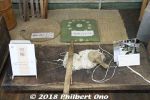
Later, it is mashed/beaten in a stone mortar.Nov 27, 2018
|
|
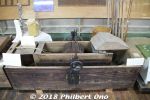
Then it goes through a mechanical beater for 10 min. to become a wet, fibrous mass. They also make and add a plant-based adhesive. Here's a good video (in Japanese) showing how they do it (the woman we saw in the river also appears in this video): https://youtu.be/-3ws9DlPVHo?t=425Nov 27, 2018
|
|
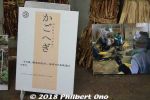
Nov 27, 2018
|
|
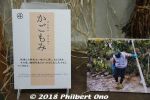
Nov 27, 2018
|
|
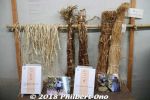
This shows how they typically hang and dry the white strips and bark strips.Nov 27, 2018
|
|
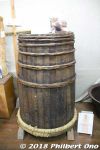
To make the paper fibers for washi, there are many laborious steps. After the kozo branches are cut in even lengths, they are stuffed in a barrel (koshiki) like this and placed over a boiling and steaming iron pot for three to four hours to soften the brown bark.Nov 27, 2018
|
|
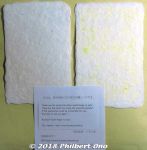
They later sent us our postcards. Mine came out okay.Nov 27, 2018
|
|
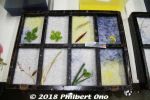
A few people even embedded leaves.Nov 27, 2018
|
|
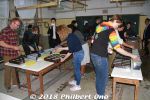
Afterward, we could decorate our postcards with colored ink/fibers.Nov 27, 2018
|
|

The postcards looked quite thick out of the mold, but they would get much thinner when dried.Nov 27, 2018
|
|
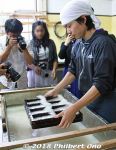
Dump the postcard mold into the vat and swish it left/right and forward/back evenly.Nov 27, 2018
|
|

Takes three years to learn how to make washi paper with a mold. Ten years to become an expert. But we did it in a minute or two... Just dip the mold into the fibrous water, and swish it to the left/right and forward/back.Nov 27, 2018
|
|

About sugeta.Nov 27, 2018
|
|
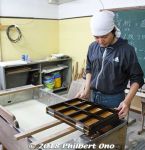
Our instructor first showed us how it was done. He used a mold to make eight washi postcards. Nov 27, 2018
|
|
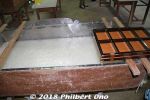
A large vat (sukifune) filled with washi fibers floating evenly in the water. The fibers are mixed in with a plant-based adhesive so they don't sink to the bottom and they also cling together to make the paper. A wooden mold (keta 桁) to make eight postcards on the right. Kurotani washi bills itself as Japan's strongest paper. In the 1920s, Kurotani washi was tested for strength and was declared the strongest washi in Japan. I was told Kurotani's kozo has longer fibers than other species so the paper is stronger.Nov 27, 2018
|
|
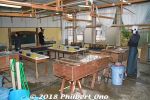
Washi papermaking room where we tried making Kurotani washi paper (postcards).Nov 27, 2018
|
|
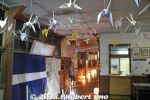
Entrance hall with origami cranes made of Kurotani washi. It really looks like an old school.Nov 27, 2018
|
|
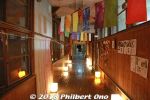
Corridor to rooms.Nov 27, 2018
|
|
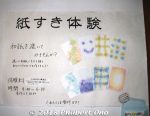
They offer washi papermaking lessons for ¥1,300 including admission.Nov 27, 2018
|
|
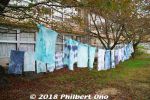
Nov 27, 2018
|
|

They use the 1st floor for making paper, while the second floor are washi exhibition rooms.Nov 27, 2018
|
|
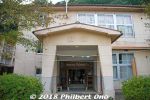
Also visited Kurotani Washi Kougei No Sato (Kurotani Washi Craft Village 黒谷和紙 工芸の里) a 20-min. car ride away.They were using an old elementary school.Nov 27, 2018
|
|
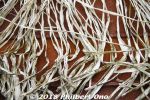
White kozo bark strips drying. These will then be mashed and beaten into fibrous globs. Preparing the kozo fibers from the bark is the most laborious and time-consuming part of washi making.Nov 27, 2018
|
|
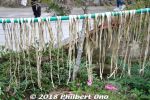
The brown kozo bark is shaved and scraped with a knife by hand to remove the brown bark skin and other blemishes. Then the becomes thin, white strips that are dried in the sun. (shiro-kawa 白皮)Nov 27, 2018
|
|
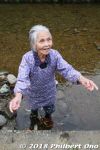
She's Horie Sayo, 86 years old, been doing it since her teens. Nov 27, 2018
|
|
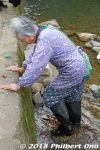
We just happened to come across her in the river kneadking the brown bark. How lucky we were.Nov 27, 2018
|
|
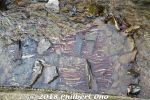
While the kozo branches are still hot, elderly ladies twist and strip off the brown bark (kuro-kawa 黒皮). The bark is dried, then soaked in river water like here.Nov 27, 2018
|
|
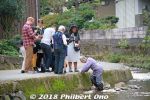
While soaking, the kozo bark is also kneaded by human feet to soften it. The water is cold, and it's a traditional job for the grandmas.Nov 27, 2018
|
|
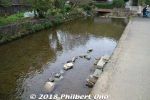
Nov 27, 2018
|
|
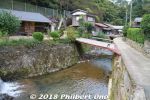
Nov 27, 2018
|
|
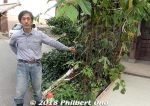
Kurotani washi mainly uses kozo or mitsumata mulberry plants as the raw material. This is our Kurotani washi guide showing us the kozo plants that can grow to three meters high.They are harvested in autumn by cutting the trunks or branches. They grow kozo mulberry near Ayabe Station. Kozo is called "kago" in Kurotani. Nov 27, 2018
|
|
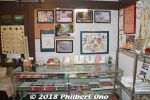
Inside Kurotani Washi Kaikan gift shop.Nov 27, 2018
|
|
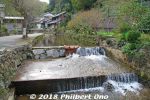
Kurotani village was blessed with this clean Kurotani River, essential for papermaking. Kurotani washi is quite famous now, even overseas.Nov 27, 2018
|
|
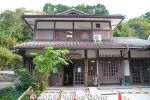
Kurotani village has this Kurotani Washi Kaikan gift shop (黒谷和紙会館). Kurotani is not touristy because it's not convenient to get here.Nov 27, 2018
|
|
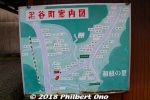
Kurotani Washi-no-Sato Japanese papermaking village in Ayabe, Kyoto.Once upon a time, there were a number of washi paper makers in northern Kyoto like Tango washi and Tanba washi, but now there's only one traditional maker that has survived called Kurotani washi. They work here in the small Kurotani Valley.Nov 27, 2018
|
|
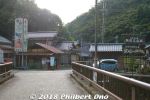
Kurotani is the name of the village (now part of Ayabe city) where they make Kurotani washi paper. This is the entrance to the small village in a valley.Kurotani Village started making washi about 800 years ago when 16 warriors of the Heike Clan defeated by the Minamoto Clan in Kyoto (Genpei War 1180–1185) fled and hid here to avoid capture. They and the local farmers made a living in summer by growing rice, but since there was nothing to do in winter, they thought of making washi paper. Washi can only be made in winter since it requires cold water.Nov 27, 2018
|
|
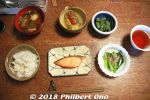
Breakfast.Nov 27, 2018
|
|
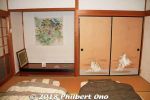
Very nice guest room.Nov 27, 2018
|
|

The guest room in the guest house was Japanese-style with twin futon.Nov 27, 2018
|
|
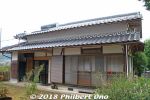
The other building was the guest house which was originally for the farmer's kids or relatives to stay when they returned to their hometown.Nov 27, 2018
|
|
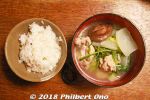
This was just the first serving.Nov 27, 2018
|
|
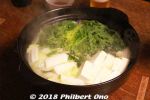
Our dinner included the rice and vegetables that he grew. (This was just the first serving.) It cost only ¥7,000 per night including dinner and breakfast.Nov 27, 2018
|
|
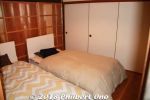
Nov 27, 2018
|
|

Guest room with twin beds.Nov 27, 2018
|
|
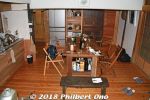
Kitchen and dining room. Totally renovated and modern on the inside, with a modern kitchen, toilet, and bath. Nov 27, 2018
|
|
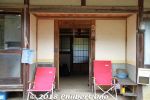
Entrance to the main lodge.Nov 27, 2018
|
|
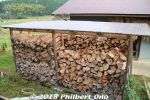
Nov 27, 2018
|
|
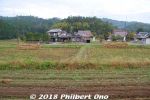
His rice paddies.Nov 27, 2018
|
|
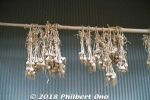
Garlic.Nov 27, 2018
|
|
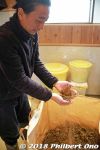
He also grows sesame seeds.Nov 27, 2018
|
|
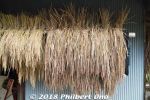
Nov 27, 2018
|
|
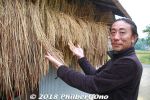
The 42-year-old owner, Kushida Kampei (櫛田寒平) moved to Ayabe from Tokyo seven years ago. He has his own rice paddies and other plots to grow his own rice and vegetables. Nov 27, 2018
|
|
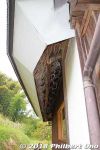
Uner the corrugated tin, you can see the thatched roof edge.Nov 27, 2018
|
|
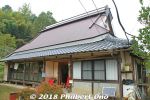
This is the main lodge where the kitchen, dining, and bath facilities are. It also has one guest room with twin beds. It is a traditional farmhouse with a thatched roof protected by a corrugated tin.Farm house in Ayabe, Kyoto Prefecture.Nov 27, 2018
|
|
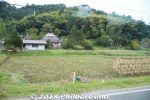
This is a farmhouse lodge (農家民宿) where we stayed in the city of Ayabe. It fronts rice paddies. The farmhouse lodge owner can pick you up at JR Ayabe Station.Nov 27, 2018
|
|
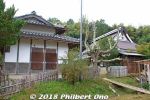
Farmhouse lodge (農家民宿) named Pokapoka Noen. It has two main buildings.Nov 27, 2018
|
|

The bags of waste materials were taken away by a crane truck on the fourth day.Nov 23, 2018
|
|
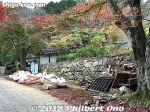
Nov 23, 2018
|
|

Thescrap wood would be hauled away separately from the waste bags.Nov 23, 2018
|
|

Nov 23, 2018
|
|

Nov 23, 2018
|
|

Nov 23, 2018
|
|

Some refreshments from the priest's wife during our lunch break.Nov 23, 2018
|
|

Nov 23, 2018
|
|

Nov 23, 2018
|
|

Nov 23, 2018
|
|

Nov 23, 2018
|
|

Nov 23, 2018
|
|

At first, I thought we would need a power shovel. But we were able to take everything apart by hand (or crow bar, shovels, and chain saw).Nov 23, 2018
|
|

Nov 23, 2018
|
|

After removing the plaster and dirt from the wall, we could see the bamboo framework. The bamboo could be easily pulled out.Nov 23, 2018
|
|

It wasn't so bad nor strenuous. Nov 23, 2018
|
|

After 3 days, the three of us disassembled the collapsed wall and produced seven large bags of kawara roof tiles, three bags of dirt and plaster, and two big piles of bamboo and scrap wood. Nov 23, 2018
|
|

It took three days to disassemble the wall into scrap wood, dirt and plaster, bamboo, and kawara roof tiles.Nov 23, 2018
|
|

So two of my friends and I volunteered to remove the fallen wall in mid-Nov. 2018. One friend John W. is an American experienced in disaster cleanups. Other friend was a nearby resident who had a handy chain saw. We were advised to take apart the wall and separate the materials into large bags and piles. Nov 23, 2018
|
|

The temple's front wall (about 20–30 meters long) collapsed in the Sept. typhoon and as of late Oct. they still had no plans to remove the debris due to a lack of manpower and funds. I couldn't bear the thought of tourists (often by the busloads) coming to see the foliage in Nov. and also see this unsightly mess of collapsed wall. Doesn't reflect well on the neighborhood and on the city.Nov 23, 2018
|
|

Nov 23, 2018
|
|

The temple wall also hit and slightly damaged the temple's tourist signs.Nov 23, 2018
|
|

The wall tore off from this storehouse.Nov 23, 2018
|
|

It was pretty shocking to see this. Fortunately, no one was hurt.Nov 23, 2018
|
|

In Sept. 2018, this front wall of Tokugen-in temple collapsed due to a strong typhoon. It fell face down as the winds blew from behind.Nov 23, 2018
|
|

Collapsed wall gone. Now the tourists comingto see the fall leaves won't be so shocked to see the mess that was here.Nov 23, 2018
|
|

Nov 23, 2018
|
|

Nov 23, 2018
|
|

In Sept. 2018, this front wall of Tokugen-in temple collapsed due to a strong typhoon.Nov 23, 2018
|
|

Nov 23, 2018
|
|

I had a great autumn photo shoot this day at Tokugen-in.Nov 23, 2018
|
|

Nov 23, 2018
|
|

Nov 23, 2018
|
|

Little Shinto shrine and red maples.Nov 23, 2018
|
|

Nov 23, 2018
|
|
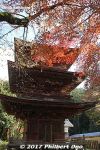
Tokugen-in's Three-story Pagoda.Nov 23, 2018
|
|
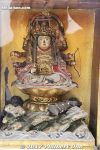
Benzaiten, goddess of musicNov 23, 2018
|
|
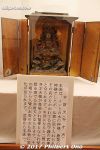
Nov 23, 2018
|
|
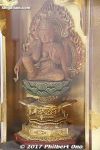
Nov 23, 2018
|
|
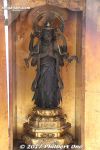
The Corridor displayed some objects of worship that were kept by Tokugen-in's secondary temples that were nearby. Those temples are no more, but these statues were saved.Nov 23, 2018
|
|

"Ghost scroll painting" by Shimizu Setsudo from Higashi-Azai, Shiga Prefecture. 清水節堂(1876–1951) 幽霊図Nov 23, 2018
|
|

The famous "ghost scroll painting" by Shimizu Setsudo at Tokugen-in Temple in Kiyotaki, Maibara, Shiga.清水節堂(1876–1951) 幽霊図Nov 23, 2018
|
|

The famous "ghost scroll painting" by Shimizu Setsudo. The ghost seems like it's stepping out of the picture. The scroll is displayed only during certain months.清水節堂(1876–1951) 幽霊図Nov 23, 2018
|
|
| 71466 files on 284 page(s) |
 |
 |
44 |  |
 |
|